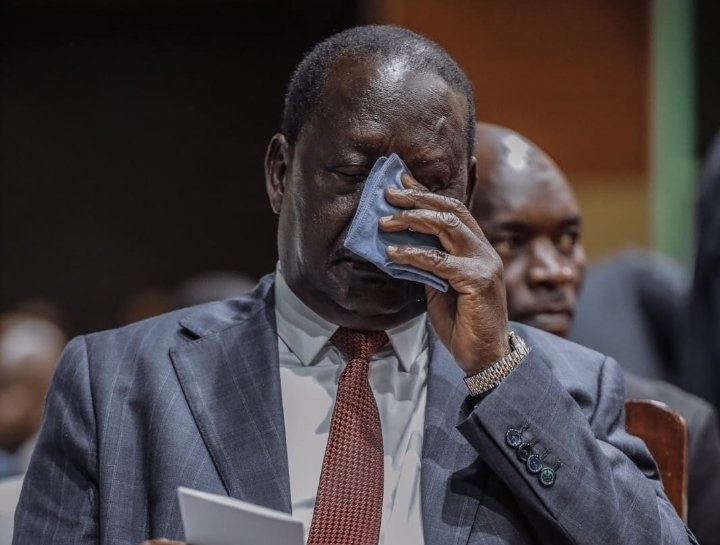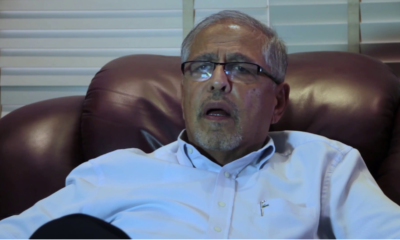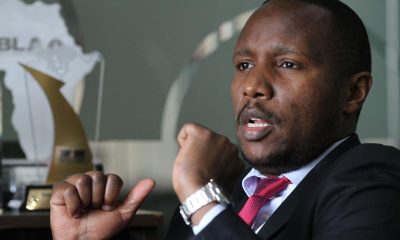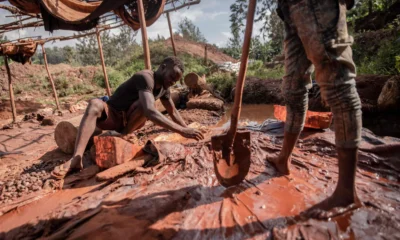News
When Emotion Overwhelmed Protocol: Inside the JKIA Security Breach That Shocked a Nation
In a cruel irony, the condition that critics mocked actually burnished his credentials among supporters.

For decades, it became one of Kenya’s most recognizable political gestures. Raila Odinga, addressing thousands at rallies from Uhuru Park to Kasarani, would pause mid-sentence, reach into his pocket, and produce a crisp white handkerchief.
With practiced ease, he would dab at the corners of his eyes, then resume speaking as if nothing had happened.
The handkerchief was never far from his grasp, a constant companion that became as much a part of his public persona as his trademark Vitenge shirts.
His detractors saw opportunity in the affliction. Opposition politicians would mockingly wipe imaginary tears during their own speeches, suggesting the former Prime Minister was perpetually emotional or performing for sympathy.
On social media, memes proliferated. But those who knew the truth understood that what flowed from Raila’s eyes was not sentiment but the physical manifestation of Kenya’s darkest political chapter.
The answer lay buried in the belly of Nyayo House, in those infamous basement chambers where the Moi regime warehoused its political prisoners.
Between 1982 and 1988, Raila disappeared into that concrete hell, detained without trial after being implicated in the failed coup attempt.
What happened in those cells would mark him permanently, etching itself onto his very physiology.
Ahmed Hashi, a confidant of many years, recalled the day Raila finally explained the condition. During a routine meeting, Hashi noticed the constant dabbing and offered a fresh handkerchief.
Later, in a moment of candor, Raila revealed what seven years of detention had cost him.
The torture chambers, deliberately kept in perpetual darkness, had deprived his body of essential sunlight.
His lacrimal glands and ducts, the delicate machinery responsible for tear production and drainage, had sustained irreversible damage.
The normal communication between brain and eye had been severed. Now his tears flowed involuntarily, uncontrolled, a permanent reminder of suffering that could not be undone.
When Raila stood at Kasarani Stadium in 2021 to accept the Azimio presidential nomination, he finally told Kenyans what that handkerchief represented.
“The tears from the torture chambers are still running, as you can tell from the handkerchief that never leaves my hand,” he declared. It was not a plea for sympathy but a simple statement of fact.
Medical science explains that tears normally flow on command, when the brain detects irritation or emotion.
The lacrimal glands produce moisture, which travels through ducts to cleanse and protect the eye. But damage those glands, disrupt those ducts, and the system fails.
The tears come unbidden, streaming down without purpose or control.
For Raila, every public appearance became a dual performance.
He had to deliver his message while managing a body that would not cooperate, eyes that wept without his permission.
The handkerchief became his tool of defiance, proof that torture had marked but not broken him.
In a cruel irony, the condition that critics mocked actually burnished his credentials among supporters.
Here was physical evidence of sacrifice, a wound worn openly that testified to his commitment. Other politicians spoke of their struggles. Raila’s body bore permanent witness to his.
His supporters had long believed that decades of exposure to teargas at demonstrations had damaged his eyes.
It was a reasonable assumption for a man who had led countless protests, often standing at the front when police canisters flew.
But the truth ran deeper and darker than that.
Now, as Kenya mourns the passing of one of its most consequential political figures, that white handkerchief has taken on new meaning.
What was once a symbol of physical affliction has become a relic of national significance, a tangible connection to an era when speaking truth carried unimaginable cost.
The tears that once flowed from damaged ducts, products of deliberate cruelty in underground chambers, have been replaced by genuine tears of grief.
Across the country, Kenyans weep for a man whose own involuntary tears told a story of sacrifice that words alone could never capture.
The handkerchief that never left his hand will be remembered not as a sign of weakness, but as a badge of resilience, proof that some scars run so deep they alter the body itself, yet still the spirit endures.
Kenya Insights allows guest blogging, if you want to be published on Kenya’s most authoritative and accurate blog, have an expose, news TIPS, story angles, human interest stories, drop us an email on [email protected] or via Telegram
-

 News5 days ago
News5 days agoTemporary Reprieve As Mohamed Jaffer Wins Mombasa Land Compensation Despite Losing LPG Monopoly and Bitter Fallout With Johos
-

 Business2 weeks ago
Business2 weeks agoPanic As Payless Africa Freezes With Billions of Customers Cash After Costly Jambopay Blunder
-

 Investigations5 days ago
Investigations5 days agoFrom Daily Bribes to Billions Frozen: The Jambopay Empire Crumbles as CEO Danson Muchemi’s Scandal-Plagued Past Catches Up
-

 Sports4 days ago
Sports4 days ago1Win Games 2025: Ultimate Overview of Popular Casino, Sports & Live Games
-

 Business5 days ago
Business5 days agoHass Petroleum Empire Faces Collapse as Court Greenlights KSh 1.2 Billion Property Auction
-

 Investigations1 week ago
Investigations1 week agoHow SportPesa Outfoxed Paul Ndung’u Of His Stakes With A Wrong Address Letter
-

 Business1 day ago
Business1 day agoEABL Under Probe Over Controversial Sh16.8 Billion Bond Raised Before Disclosing Change in Control
-

 News5 days ago
News5 days agoShanta Gold’s Sh680 Billion Gold Discovery in Kakamega Becomes A Nightmare For Community With Deaths, Investors Scare



















